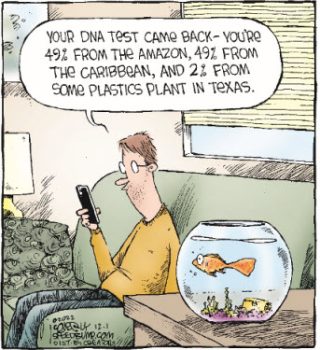 What’s found in the air you breathe, the water you drink, the food you eat, inside your brain, and even in a newborn baby’s first poop? If you answered plastic, you would be correct. Recent studies have found micro- and even smaller nano-plastic particles virtually everywhere in the environment.
What’s found in the air you breathe, the water you drink, the food you eat, inside your brain, and even in a newborn baby’s first poop? If you answered plastic, you would be correct. Recent studies have found micro- and even smaller nano-plastic particles virtually everywhere in the environment.
Some results have surprised scientists. Bottled water was found to contain not only PET (the plastic used to make the bottle), but greater amounts of polyamides (from the nylon filters used to purify the water by reverse osmosis), plus polystyrene, polyvinyl chloride, polymethyl methacrylate (AKA plexiglass), and a host of other plastics of unknown origin and chemistry. Many were small enough to cross the blood-brain barrier and carry other molecules along with them. The health effects in humans are unknown, but animal studies have raised multiple concerns. Therefore, it could be prudent to avoid unnecessary exposure, especially in children.
It’s impossible to avoid exposure, but here are some ways to minimize it:
- Whenever possible, use glass or stainless-steel containers for beverages and food storage.
- Never microwave food in plastic.
- Do not wash plastic containers in the dishwasher.
- Limit your consumption of canned foods – the can lining is likely made of plastic.
- Reduce your consumption of processed foods. Consumer Reports recently detected phthalates in 84 of 85 processed foods tested, and most also contained bisphenols. But you may want your table salt to be more processed; sea salt can be high in plastic contamination.
- Choose clothing made from natural materials.
You can also take steps to minimize the single-use plastic that you add to the environment by adjusting your daily purchase decisions.
For further reading on this subject, follow these links:
- What’s the Disease Burden from Plastic Exposure? (Medscape)
- Chemicals Common in Food Packaging Linked to Preterm Births (WebMD)
- How to Eat Less Plastic (Consumer Reports)
